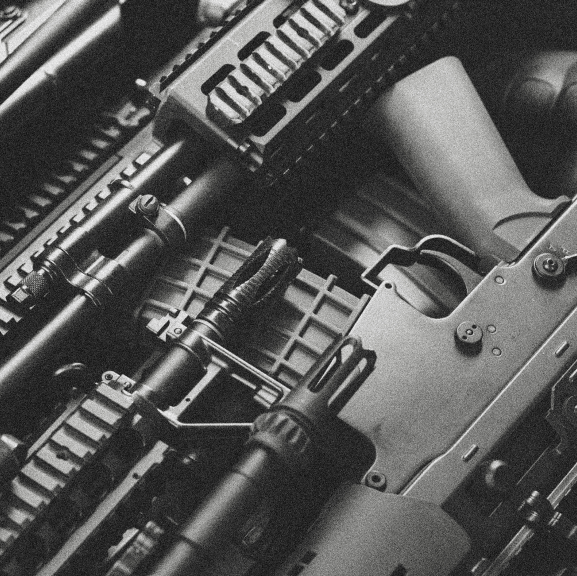TODAY’S FIREARMS ARE DEADLIER THAN EVER
Every firearm is dangerous and capable of taking life. But every day, the gun industry works to create increasingly deadly weapons and modifications — garnering sales while moving further and further away from safer firearms.
WHY THIS MATTERS
In recent years, the gun industry has doubled down on assault weapons and high-capacity magazines, which have been used in the country’s deadliest mass shootings. In fact, mass shootings carried out with assault weapons and high-capacity magazines have over twice as many fatalities as shootings that don’t involve those items. But the firearms industry continues to market them and supports their proliferation.
To make matters worse, the firearms industry has exploited legal loopholes to create easier-to-conceal weapons like folding guns and short-barreled ARs and AKs masquerading as “pistols,” DIY kits that allow people — including those prohibited from owning firearms — to build their own untraceable guns and silencers at home in minutes, and modifications to drastically increase a weapon’s rate of fire, to name just a few examples.
Industry Intel
LETHAL FIREARM INNOVATIONS
- Assault Weapons and High-Capacity Magazines: Understanding the military-grade firepower that leads to deadlier mass shootings
- “Glock Switches” and Auto Sears: A closer look at the machine gun conversion devices showing up at crime scenes across the U.S.
- Bump Stocks: Gun industry innovations that allows AR-15s and AK-47s to fire up to 800 rounds per minute
- Rapid-Fire Triggers: Binary and forced-rest triggers can dramatically increase a weapon’s rate of fire
- Arm Braces: How gun makers exploited a device originally designed for disabled shooters
- Folding Guns: The gun industry’s push for weapons that are easy to hide but quick to deploy
- Ghost Guns: DIY kits making it easy for people — especially those prohibited from owning weapons — to build untraceable firearms at home
- Silencers: Devices that muffle the sound of gunfire and make it difficult to determine where gunshots originate
- Exploding Targets: Promising more fun on the range, exploding targets have led to devastating wildfires and deaths
At the same time, gun makers have resisted lifesaving features that render firearms inoperable and prevent unintentional discharges, from traditional “low-tech” safety mechanisms to smart guns that can only be fired by authorized users. For example, in 2000, when Smith & Wesson agreed to a number of safety reforms, including developing smart guns and firearms that couldn’t accept high-capacity magazines, the gun industry supported a boycott of the company until it almost went bankrupt.
Gun makers keep pushing the envelope to stand out in a crowded marketplace and garner more sales from enthusiasts seeking “tactical,” military-grade firepower. But these faster, deadlier products have no legitimate purposes among civilians and, as mentioned, can lead to drastically more victims when they fall into the wrong hands.
